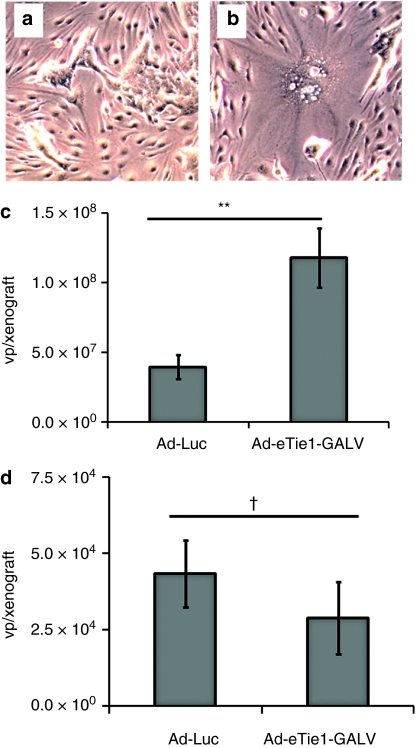Figure 5.
Heterocellular syncytium formation provides viral access to target cells and elicits transactivation of virus replication in vivo. Murine endothelial to human epithelial fusion was tested in vitro by the mixing of uninfected HEK 293 cells with bEnd.3 cells which had been preinfected with (a) Ad-Luc or (b) Ad-eTie1-GALV (5,000 particles per cell, 2 hours). Phase-contrast images taken at 24 hours after mixing different cell populations. For in vivo studies, female SCID mice (Charles River) were implanted subcutaneously with 2.5 × 106 HEK 293 or PC-3 cells; xenografts were allowed to develop to ~4 mm in diameter before i.v. administration of either the control Ad-Luc virus or Ad-eTie1-GALV at 3 × 1010 vp/animal. Xenografts were harvested at 48 hours after virus injection; tissues were homogenized and genomic DNA was extracted. Ad genomes present in (c) HEK 293 xenografts or (d) control PC-3 tumors were quantified by QPCR. Data represent mean values ± SE of the mean; statistical analyses were performed by t-tests (n = 7, except for Ad-eTie1-GALV in PC-3 where n = 6); **P < 0.01, †P > 0.05. Ad, adenovirus; GALV, gibbon ape leukemia virus; HEK 293, human embryonic kidney 293; HUVEC, human umbilical vein endothelial cell; KDR, kinase insert domain receptor; QPCR, quantitative PCR.

